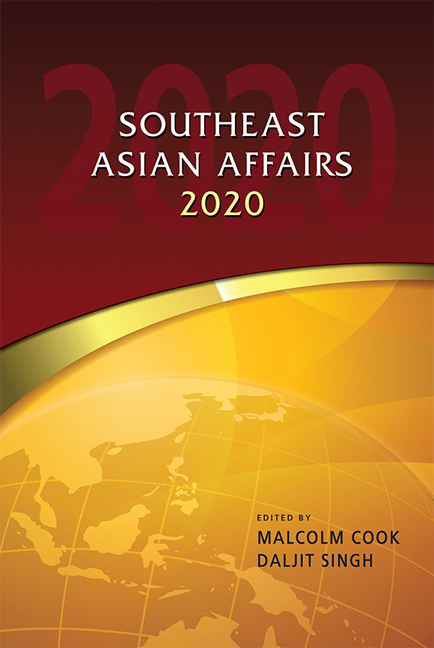Economic Overview of Southeast Asia
Published online by Cambridge University Press: 24 November 2020
Summary
This chapter provides an overarching view of macroeconomic trends in Southeast Asia in 2019.
The current state of the regional economies is first assessed. In general, the regional economies had to face a troubled global environment but demonstrated an encouraging degree of resilience in doing so.
The cyclical prospects are then considered. Two key factors will drive the outlook for next year. The first is how the global economy pans out—especially whether an improvement in the trade picture allows a recovery in business confidence and capital spending. A second factor is the impact of supportive monetary and fiscal policies.
Finally, a review of developments this year that shaped key drivers of the secular regional outlook is conducted. Four key drivers are identified and are likely to be supportive of an improved growth outlook in the medium term—infrastructure spending, synergies from economic integration initiatives, production relocation out of China and an improved business ecosystem.
Section 1: Recent Trends in the Regional Economies
Two contrasting themes characterized economic developments in Southeast Asia in 2019—growing challenges and a surprising degree of resilience. The regional economies had to contend with a turbulent global environment in 2019. Global demand for Asian exports was subdued, depressing economic growth and commodity prices in a region that remains heavily trade-dependent. Nevertheless, the region demonstrated a degree of resilience: economic growth continued, albeit modestly, while external stability was maintained. This relatively benign outcome was partly the payoff to the improved capacity for policy response in the region—and it builds a good base for future economic performance.
A confluence of disturbances hurt the global economy in 2019. Global economic activity began to weaken from around the middle of 2018 onwards and the decline persisted through 2019. As a result, global economic growth eased, from 3.8 per cent in 2017 to 3.6 per cent in 2018 and then to an estimated 3.0 per cent in 2019 according to the International Monetary Fund (Figure 1). In parallel, the world economy saw a pronounced slowing in export demand (Figure 2). Not surprisingly, the World Trade Organization (WTO) became more cautious about world trade prospects.
- Type
- Chapter
- Information
- Southeast Asian Affairs 2020 , pp. 19 - 42Publisher: ISEAS–Yusof Ishak InstitutePrint publication year: 2020

